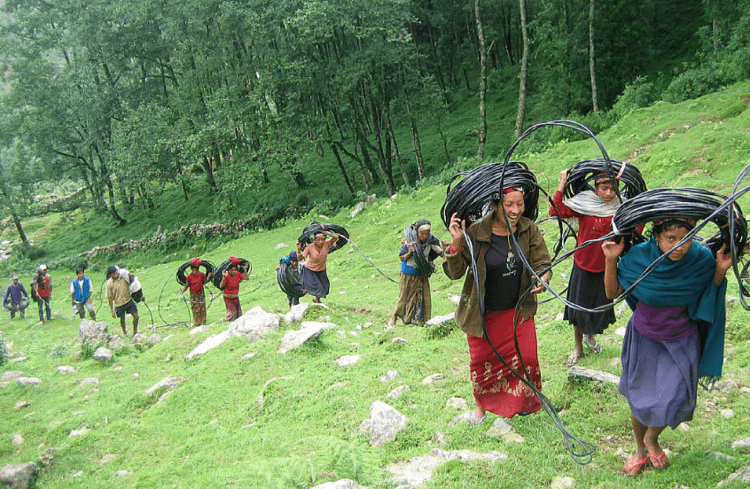UN Secretary General Ban Ki-Moon, who himself grew up studying under the smoky flame of a kerosene light, called energy the golden thread that “connects economic growth, social equity, and environmental sustainability", underpinning every one of the Sustainable Development Goals. Our recent Power for All report, Decentralized Renewables: The Fast Track to Energy Access, highlighted the opportunity cost of waiting to bring power to communities and businesses through traditional energy infrastructure; centralized grid solutions can take up to a decade to come online. Whilst more research is needed to fully understand the foregone benefits that result from centralized grid-only approaches, pioneering governments aren’t waiting. They are seeing the benefits of rapid deployment of decentralized solutions for schools, hospitals and community buildings. Innovative programs are increasing impact by meeting public sector needs whilst jump starting private sector markets for decentralized renewable energy (DRE) at the same time.
The Bangladesh Infrastructure Development Company Limited (IDCOL) program provides perhaps the best known example of a joined up approach to public and private sector DRE promotion. To kick-start energy access through solar home systems, mini-grids, solar powered telecoms and biogas, the government recognized the need to both encourage private investment into the sector and consolidate DRE market development through one intermediary, bringing together suppliers of solar home systems, SMEs, micro-finance organizations, civil society, development partners and international donors. Though the program has not been without challenges, it led to the emergence of one of the largest decentralized renewable markets in the world and has enabled more than four million households to access clean energy services to date.
Building on IDCOL, the government of Bangladesh created the Sustainable and Renewable Energy Development Authority (SREDA) in 2014. SREDA is tasked with implementing a 500MW solar program to provide electricity to education institutions, health centers, mosques and union information centers in unelectrified areas. It was also given a remit to develop commercial projects, including solar irrigation, mini-grids, wind power and biomass—as well as grid-tied utility-scale solar. With its focus on productive uses and community infrastructure, SREDA seeks to build on IDCOL’s success at household level, powering the economic growth the country needs to meet its target of becoming a middle income country by 2021. It will contribute to food security, health, education and climate change goals whilst improving the balance of payments by reducing the need for imported diesel.
The idea of a “one-stop shop”, promoting DRE in public sector service delivery whilst building markets at the same time, is gaining traction elsewhere. Light Libraries in Senegal--which were set up in schools by leading distributor SunnyMoney for the Senegalese Ministry of Education in 2013—are widely credited with building trust and demand for basic solar lights, whilst the Solar Nigeria program has already brought decentralized solar to 172 schools and 11 health centers at the same time as helping private sector partners reach 70,000 households. The potential of public service provision to bolster the decentralized renewables market is also being seen by private sector players in India. Su-Kam, one of India’s leading solar companies was commissioned by the Tripura Renewable Energy Development Agency (TREDA) to install and maintain decentralized systems at 80 health centers, 14 hospitals and four hostels. While the impact on health services has been extensive, Su-Kam Managing Director, Kunwer Sachdev, also emphasizes the way health center installations have helped to create awareness and demand amongst households and small businesses.
Cross sector, and cross industry, approaches to energy access are only just starting to emerge but the evidence is clear that:
- Governments have a key role to play in increasing knowledge about decentralized renewable solutions and in helping to create trust and demand. The Sierra Leone Energy Revolution, where the national government is supporting public awareness of decentralized solar, whilst profiling quality products from the private sector is an exciting case in point.
- “One-stop shop” approaches are making it easier for investors and companies to access information regarding grants, concessional finance and financial guarantee schemes, as well as regulations around public-private partnership agreements, licensing and tendering processes.
- Multi-stakeholder approaches avoid the risk of tension between market-based and non-market based approaches. For example, the integration of decentralized solutions into energy planning processes will provide a huge boost in mini-grid activity in regions where centralized grid extension is not projected.
Given the impacts that decentralized clean energy can have on agriculture, communications, light industry and far more, the possibilities that are opened up by more cross-sector partnerships and innovative collaboration are extraordinary—the potential for bolstering Sustainable Development Goals, even greater.
